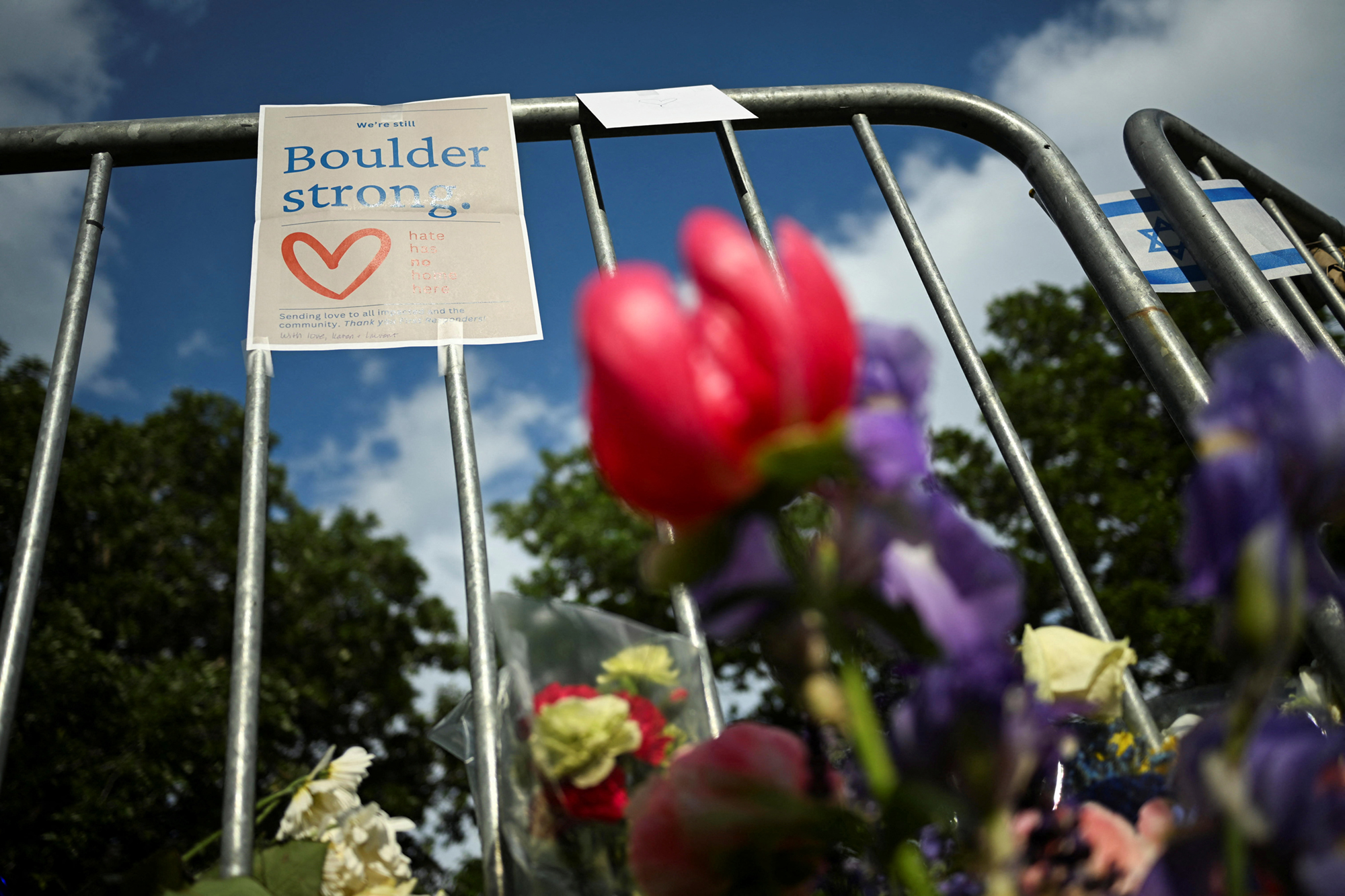Mayor Aftab Pureval says ‘too many Cincinnatians don’t feel safe.’ – Cincinnati Enquirer

Report on Public Safety, Institutional Response, and Sustainable Development in Cincinnati
Executive Summary
Following a widely publicized violent altercation in downtown Cincinnati, city officials convened to address public safety concerns and outline a path forward. The incident and the subsequent civic response highlight critical challenges and opportunities related to the United Nations Sustainable Development Goals (SDGs), particularly SDG 16 (Peace, Justice and Strong Institutions), SDG 11 (Sustainable Cities and Communities), and SDG 10 (Reduced Inequalities). This report analyzes the official statements and planned actions through the lens of these global goals, focusing on justice system reform, urban safety, and social equity.
Institutional Response and Justice System Efficacy (SDG 16)
The city’s response to the incident directly engages with the principles of SDG 16: Peace, Justice and Strong Institutions, which aims to promote peaceful and inclusive societies and build effective, accountable, and inclusive institutions at all levels.
Law Enforcement and Judicial Proceedings
Cincinnati Police have taken initial steps to deliver justice for the victims and ensure accountability for the perpetrators.
- Six individuals have been charged with felonious assault and aggravated riot.
- Three suspects have been arrested, while three remain at large.
- Police Chief Teresa Theetge described the violence as “outright cruel” and confirmed that six victims (five males and one female) suffered “unimaginable physical violence.”
Strengthening Justice Institutions
Officials acknowledged systemic weaknesses and proposed measures to create more effective and accountable institutions, in line with SDG 16 targets.
- Addressing Systemic Failures: Police Chief Theetge identified a “revolving door” of justice as a significant problem, where individuals are released with minimal consequences. This undermines public safety and trust in the justice system.
- Inter-Agency Collaboration: To combat this, the Chief has requested the Hamilton County Police Chief’s Association to form a committee to meet with prosecutors and judges to address judicial process inefficiencies.
- Enhanced Policing Capacity: Mayor Aftab Pureval announced the city has accepted an offer from Governor Mike DeWine for assistance from the Ohio State Highway Patrol. This partnership will free up Cincinnati police resources to focus on city-specific crime, strengthening the city’s capacity to ensure public order.
Urban Safety and Economic Viability (SDG 11 & SDG 8)
The incident has direct implications for SDG 11: Sustainable Cities and Communities, which includes making cities safe and resilient, and SDG 8: Decent Work and Economic Growth, as public safety is a prerequisite for a thriving local economy.
Public Safety in Urban Spaces
The perception of safety, a key indicator of a sustainable community, has been severely impacted.
- Mayor Pureval acknowledged a gap between crime data and public feeling, stating, “Too many Cincinnatians don’t feel safe.”
- The decision by One Logistics Network, a local firm, to relocate its offices from downtown to a suburb explicitly due to safety concerns demonstrates a direct economic consequence of failing to ensure safe urban environments (SDG 8).
- Downtown restaurateurs have also called for a “real plan” to address public safety, linking the issue directly to the sustainability of their businesses.
Crime Data Overview
Official data presents a mixed but concerning picture of urban safety:
- Homicides: Citywide homicides have increased to 34, compared to 30 at the same time last year.
- Property Crime: Burglaries and thefts from vehicles have nearly doubled in the Downtown and Over-the-Rhine neighborhoods.
- Shootings: Reported shootings across the city have decreased from 142 at this point last year to 110 this year.
Social Cohesion and Reduced Inequalities (SDG 10)
The discourse surrounding the altercation has brought issues of racial equity to the forefront, underscoring the importance of SDG 10: Reduced Inequalities.
Concerns of Unequal Justice
Community leaders have raised concerns that the justice system’s response may not be equitable, a direct challenge to the goal of reducing inequality within and among countries.
- Reverend Damon Lynch highlighted the racial dynamics of the incident, stating, “This is racial because it’s unequal justice.”
- He noted that while the initial verbal altercation involved a White man who later escalated the conflict by slapping a Black man, the subsequent arrests have predominantly involved Black individuals.
- Reverend Lynch questioned why the individual who allegedly re-engaged and escalated the situation was not facing charges, pointing to a perceived disparity in accountability.
Call for Unity
In his address, Mayor Pureval acknowledged the “unavoidable” racial dynamics and called on citizens to resist division and continue the collective work of healing racial divisions, reinforcing the need for inclusive societies as promoted by both SDG 10 and SDG 16.
SDGs Addressed in the Article
SDG 16: Peace, Justice and Strong Institutions
This goal is central to the article, which revolves around issues of violence, crime, public safety, and the justice system’s response. The discussion covers a specific violent brawl, homicide rates, the role of the police, and the effectiveness of the judicial process.
- The article details a “vicious fight” and “outright cruel” violence, with six people suffering “unimaginable physical violence.”
- It mentions city-wide crime statistics, including “38 homicides” and “110 people have been shot so far this year.”
- It highlights challenges within the justice system, described by the Police Chief as a “‘revolving door’ of justice,” and efforts to strengthen institutions by forming committees and accepting help from the state patrol.
- Rev. Damon Lynch’s comments on “unequal justice” directly address the goal’s aim for fairness and non-discrimination within legal institutions.
SDG 11: Sustainable Cities and Communities
The article addresses the safety and inclusivity of urban spaces, a key component of SDG 11. The events described directly impact the public’s sense of security and the viability of living and working in downtown Cincinnati.
- The brawl occurred in a public space (“downtown Cincinnati”), raising questions about public safety.
- The Mayor acknowledges that “Too many Cincinnatians don’t feel safe,” indicating a gap between the reality of crime data and public perception of safety.
- The decision of a logistics firm to relocate its offices from downtown “following a string of violent incidents” is a direct economic consequence of failing to ensure safe urban environments.
- Restaurateurs have “called for a ‘real plan’ to address the recent public safety concerns,” showing the business community’s concern for the city’s safety.
SDG 10: Reduced Inequalities
The article points to racial inequality as a significant factor in both the incident and the subsequent response from the justice system.
- The mayor acknowledges the fight has “‘unavoidable’ racial dynamics.”
- Rev. Damon Lynch explicitly frames the issue in terms of racial inequality, stating, “This is racial because it’s unequal justice.” He points out that only Black individuals’ mugshots were released, despite a White person allegedly instigating the physical conflict. This suggests an inequality of outcome based on race.
- The article mentions the city has “worked for years to heal racial division,” connecting the incident to a broader, ongoing struggle for racial equality.
Specific Targets Identified
-
SDG Target 16.1: Significantly reduce all forms of violence and related death rates everywhere.
The article is fundamentally about violence. It discusses a specific, brutal brawl, along with broader crime statistics. The city leaders’ entire press conference is a response to the need to reduce violence and crime.
- Specific mentions include “34 reported homicides, compared to 30 at this time last year,” and “110 people have been shot so far this year.”
- The detailed description of the brawl, where people were punched and kicked until motionless, directly relates to reducing “all forms of violence.”
-
SDG Target 16.3: Promote the rule of law at the national and international levels and ensure equal access to justice for all.
The article highlights deep concerns about the functioning and fairness of the justice system.
- Police Chief Theetge’s comment about the “‘revolving door’ of justice” where criminals are “released with little consequence” points to a perceived failure in the rule of law.
- Rev. Lynch’s statement, “I don’t see the person who reengaged … I don’t see the slapper’s mugshot. This is racial because it’s unequal justice,” is a direct claim of a failure to ensure equal access to justice.
-
SDG Target 11.7: By 2030, provide universal access to safe, inclusive and accessible, green and public spaces…
The incident and the community’s reaction underscore the importance of safety in public urban spaces.
- The brawl took place “in downtown Cincinnati,” a key public area.
- The fact that residents, workers, and business owners have expressed significant safety concerns, with one company relocating, shows that access to safe public space is compromised. The mayor’s statement that “Too many Cincinnatians don’t feel safe” confirms this.
-
SDG Target 10.3: Ensure equal opportunity and reduce inequalities of outcome, including by eliminating discriminatory policies and practices…
The racial dimension of the incident and its aftermath directly connects to this target.
- Rev. Lynch’s analysis of who was arrested and charged versus who allegedly started the altercation (“When Lynch is looking at the mugshots from this incident, he only see Black faces”) points to a perceived inequality of outcome in the justice system based on race.
Indicators Mentioned or Implied
-
Indicator 16.1.1: Number of victims of intentional homicide per 100,000 population…
The article provides raw data that is used to calculate this indicator.
- It states, “Citywide, there have been 34 reported homicides, compared to 30 at this time last year.” While not a rate per 100,000, this is the primary data for tracking progress.
-
Indicator 16.1.3: Proportion of population subjected to physical violence…
The article provides specific numbers of victims of physical violence.
- “Police have identified six people who suffered ‘unimaginable physical violence'” in the brawl.
- It also notes that “110 people have been shot so far this year,” which is a direct measure of victims of severe physical violence.
-
Implied Indicator for Target 11.7: Perception of public safety.
While not a formal UN indicator, the feeling of safety is a critical measure for Target 11.7. The article provides strong qualitative evidence for this.
- The Mayor is quoted saying, “Too many Cincinnatians don’t feel safe.”
- The relocation of a business due to safety concerns and restaurateurs calling for a “real plan” serve as tangible results of a negative perception of safety.
-
Implied Indicator for Target 16.3 & 10.3: Arrest and prosecution data disaggregated by race.
The article implies that this data would reveal disparities.
- Rev. Lynch’s observation that he “only see Black faces” in the mugshots, despite the alleged actions of a White individual, suggests that an analysis of arrest and charging data by race for this incident would be a key indicator of “unequal justice.”
Summary of Findings
| SDGs | Targets | Indicators (Mentioned or Implied in the Article) |
|---|---|---|
| SDG 16: Peace, Justice and Strong Institutions | 16.1: Significantly reduce all forms of violence and related death rates everywhere. |
|
| 16.3: Promote the rule of law… and ensure equal access to justice for all. |
|
|
| SDG 11: Sustainable Cities and Communities | 11.7: Provide universal access to safe, inclusive and accessible… public spaces. |
|
| SDG 10: Reduced Inequalities | 10.3: Ensure equal opportunity and reduce inequalities of outcome… |
|
Source: cincinnati.com

What is Your Reaction?
 Like
0
Like
0
 Dislike
0
Dislike
0
 Love
0
Love
0
 Funny
0
Funny
0
 Angry
0
Angry
0
 Sad
0
Sad
0
 Wow
0
Wow
0











































































